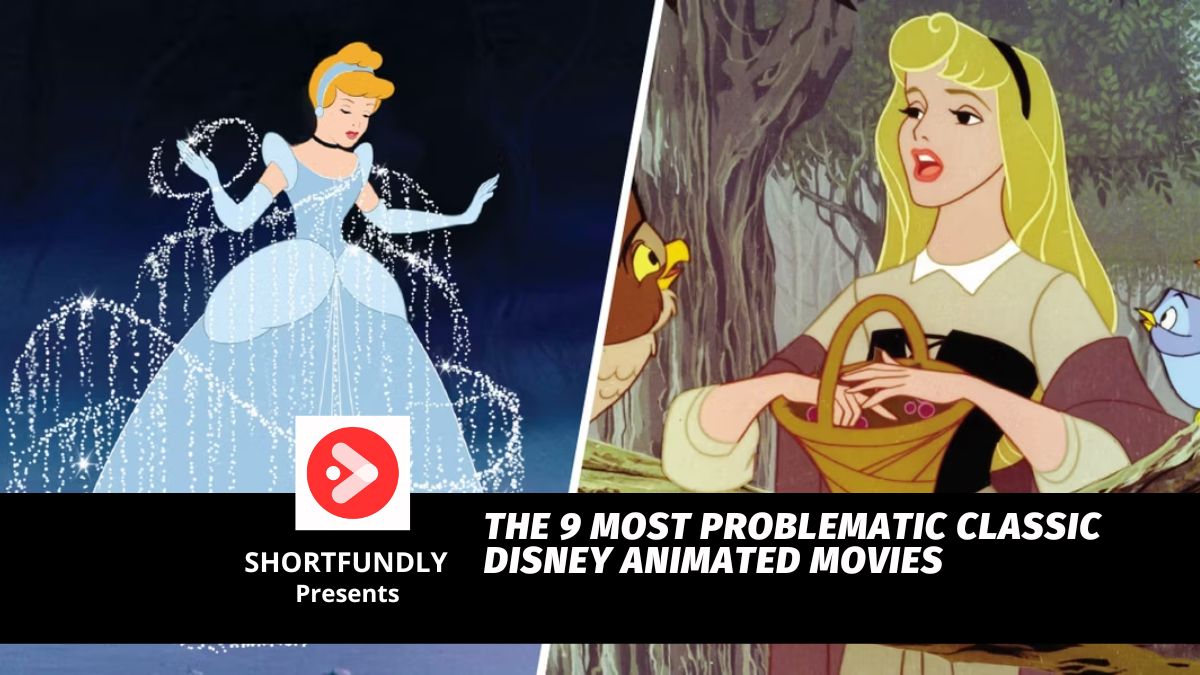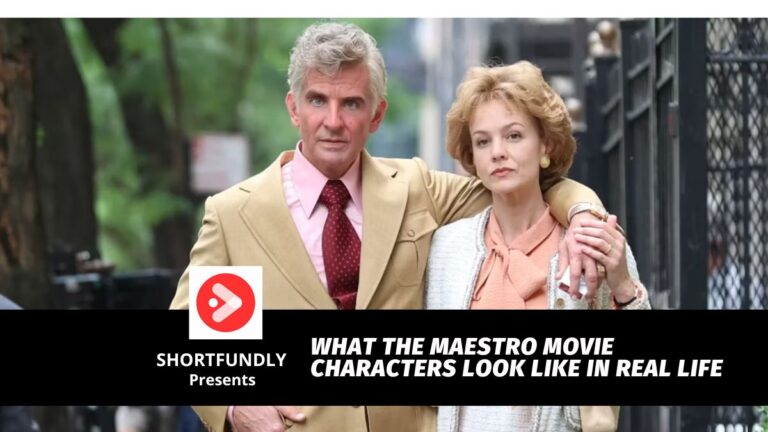Table of Contents
Dating back to 1937, Disney has crafted numerous timeless animated movies that hold a special place in fans’ hearts. These classics, known for their exquisite animation and heartwarming stories, have become ingrained in popular culture, especially through the iconic characters featured in theme parks. While everyone has a favorite Disney movie, it’s crucial to acknowledge the controversies and problematic themes present in these cherished films. The surge in live-action remakes is seen by some as Disney’s attempt to address and improve the image associated with these classics. As of December 14, 2023, this article has been updated to include additional problematic Disney animated films and refreshed content.
Sponsered English Shortfilm Playlist
The 9 Most Problematic Classic Disney Animated Movies
Cinderella (1950)
Cinderella, a classic fairy tale, narrates the tale of a beautiful young woman who, following the loss of her father, faces mistreatment from her cruel stepmother and stepsisters. The story takes a problematic turn when Cinderella, oppressed and in servitude, is magically transformed by her fairy godmother to attend the royal ball. The main concern arises when Cinderella deceives the prince about her identity, conveying a troubling lesson to children. The narrative implies that dishonesty can lead to desired outcomes, ultimately reinforcing a questionable moral message, which is a noteworthy flaw in Disney’s portrayal of this beloved fairy tale.
The Aristocats (1970)
The Aristocats, set in 1910 Paris, tells the story of Duchess, an elegant cat, and her three kittens as they try to return home and inherit their fortune after being abandoned. They befriend O’Malley, an alley cat, who assists them on their journey, and a romance develops between O’Malley and Duchess. Despite its initial success, the film has faced criticism for its portrayal of the Siamese cat Shun Gon, viewed by many as a racist caricature with exaggerated stereotypical features and offensive language. As a result, Disney+ has restricted the film’s access to viewers aged 7 and older.
Lady and the Tramp (1955)
Lady and the Tramp, a timeless love story between a refined Cocker Spaniel and a charming homeless mutt, is celebrated for its heartwarming tale, notably the iconic spaghetti-sharing scene set to “Bella Notte.” Despite its acclaim, the film has faced criticism for incorporating insensitive racial stereotypes. Similar to The Aristocats, Lady and the Tramp features two Siamese cats named Si and Am, portrayed with ethnic caricatures and singing the controversial “The Siamese Cat Song” in broken English. The inclusion of these characters is seen as perpetuating anti-Asian sentiments, particularly given the film’s release shortly after the Korean War. This aspect has led to concerns about the movie’s impact and its problematic representation of certain characters.
Sleeping Beauty (1959)
Centered around the enchanting Princess Aurora, who is concealed deep within a forest with three benevolent fairies after falling victim to a curse cast by the sinister Maleficent, Sleeping Beauty stands out as one of Disney’s most artistically acclaimed films. The narrative unfolds as the innocent heroine succumbs to a profound slumber upon pricking her finger on a spinning wheel, with only the power of true love’s kiss capable of rousing her from this spell.
However, the film is not without its controversies, and a closer look at one particular scene reveals its problematic nature. The act of kissing or engaging in any form of intimate interaction with someone without their consent, especially when they are unconscious, is widely acknowledged as morally wrong and even illegal. Despite this societal understanding, Disney presents such a moment as cute and romantic, propagating the notion that true love’s kiss can break a devastating and lethal curse.
Dumbo (1941)
Dumbo, the endearing circus elephant with oversized ears, overcomes mockery to showcase his flying ability in a spectacular act, earning the admiration of his peers. The film also highlights the wholesome friendship between Dumbo and his mouse companion, Timothy. Despite its success and Academy Award for Best Original Score, the movie is criticized for its problematic elements. Specifically, it includes racially insensitive themes, such as the scene with singing crows that seems reminiscent of racist minstrel shows featuring white actors in blackface. Additionally, the leader of the crows is named Jim Crow, a troubling reference to America’s history of racism.
Release and distribute your short films, web series and album songs through Shortfundly and earn monthly. Click here to learn more.
Snow White and The Seven Dwarves (1937)
Disney’s inaugural full-length animated feature, the revered 1930s classic “Snow White and the Seven Dwarfs,” retells the Brothers Grimm fairy tale with a primary focus on the beautiful princess who incurs the jealousy of her wicked stepmother in her quest for the title of the fairest in the kingdom. Seeking refuge in the woods and finding companionship with seven eccentric dwarfs, Snow White falls victim to a poisoned apple and can only be revived by a prince’s kiss.
Why It Poses Issues: Similar to “Sleeping Beauty,” “Snow White” raises concerns related to consent. Compounding the problem, the character of Snow White is depicted as only 14 years old in the film. Beyond the consent issues, the narrative introduces discomforting controversies related to underage marriage and inappropriate interactions. Learning about Snow White’s age can significantly alter the audience’s perception of the character and may lead them to view the classic film with a more critical lens. It’s anticipated that these problematic elements will likely be addressed in the upcoming remake to mitigate potential concerns.
Pinocchio (1940)
Despite being a groundbreaking animated fantasy with a compassionate toymaker and a benevolent blue fairy, Pinocchio is often overlooked for its dark and problematic themes. The film’s portrayal of child abuse and trafficking is uncomfortably explicit, with Pleasure Island serving as a questionable warning against vices like drinking and smoking. The narrative takes a disturbing turn as young children are transformed into donkeys and forced into a life of labor in mines, raising concerns about the appropriateness of such content for children, despite its classic status.
Peter Pan (1953)
In J.M. Barrie’s iconic tale of the perpetually young and mischievous boy, Peter Pan, the narrative unfolds with Peter leading Wendy Darling and her siblings on a fantastical journey to Never Land. There, they encounter the menacing Captain Hook and his loyal accomplice Mr. Smee. Amidst the showdown with Peter’s archenemy, Wendy gains a newfound appreciation for her life in London.
However, the film adaptation by Disney, like many of its twentieth-century counterparts, faces criticism for perpetuating harmful stereotypes. Particularly, the portrayal of Native Americans in Peter Pan is deemed offensive and deplorable. Disney’s approach involves mocking Native culture, creating caricatures labeled as “redskins,” and appropriating Native American imagery. The characters often speak in an indecipherable language, reinforcing exaggerated and derogatory tropes. This portrayal reflects a regrettable instance of cultural insensitivity and appropriation in the animated classic.
The Little Mermaid (1989)
The Disney film “The Little Mermaid” from the Renaissance era is criticized for its problematic themes, including issues such as underage marriage, sexism, and the sexualization of its characters. One major concern is that Ariel, the protagonist, is only 16 years old, and when she marries Prince Eric, it implies an uncomfortable union with a minor. This fact is often overlooked by many viewers.
The film is also faulted for promoting systematic sexism and misogyny, particularly through the character of King Triton. Triton embodies toxic masculinity with his stereotypical “buff” and insensitive demeanor, resorting to irrational acts of violence to assert himself and deal with frustrations. Despite his constant belittlement and outbursts towards Ariel, his approval of her marriage to a prince is presented as a redeeming act, sending a troubling message that such behavior is forgivable.
Note:
*Shortfundly is hiring for multiple roles in Chennai. Start referring your known connections to these openings*. Check it out – https://lnkd.in/erZm6rzh
About Shortfundly
Shortfundly is an OTT marketplace platform available to share the best short films and web series through global multi-platform network. Their editorial platform enables global audience to easily discover, watch, and share unique contents anywhere on their desktop, connected TV and mobile devices.
If you are planning to release and earn on an OTT platform, learn how to distribute your short film via Shortfundly.
For publishing an advertorial article about your digital news/product launch/ short film/web series/album song on our website, drop an email at [email protected]
Hey Cinephiles! We welcome guest blogging on our platform. Do share your article with us.
Check out our Shortfundly YouTube channel for other interesting podcasts & interviews with filmmakers.
To watch unlimited premium short films & web series, Download the Shortfundly mobile application now available on Google Play Store and Apple App store.






